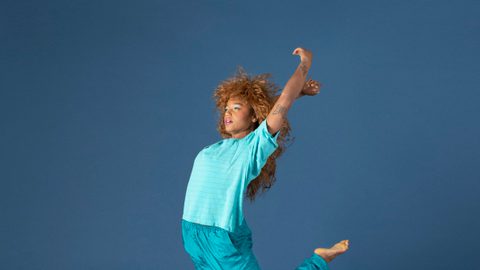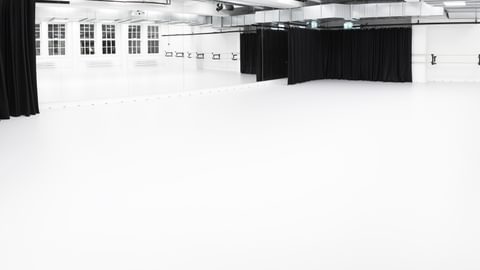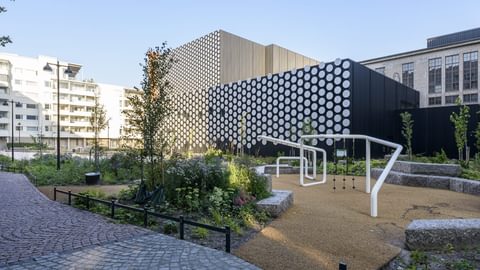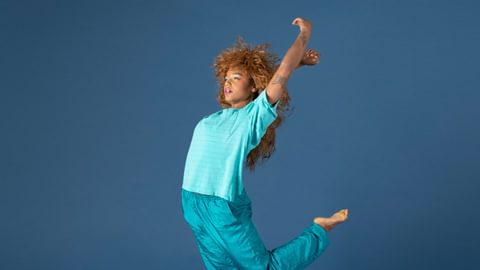
Veli Lehtovaara: Structural realities and personal conversations with the advisors
Veli Lehtovaara: Structural realities and personal conversations with the advisors
“The SPARKS project organised by Tanssin talo and supported by the Finnish Cultural Foundation is in many ways unique as regards the operating environment and structures of Finnish dance art,” says Veli Lehtovaara.
Tanssin talo, whose form of operation is planned to be a guest performance venue, will produce six performances for its programme in 2020–2023. Three of them will be performed on the large stage in the Erkko Hall, where the auditorium is approximately equal in size to the auditorium of the Finnish National Theatre.
In Finland, there has never been an open call for such a large production targeted at freelance artists. The dimensions of the new stage and auditorium as well as the amount of production funding are exceptional from the perspective of the operating environment history. Hopefully not unique, though.
The member organisations of the European Dancehouse Network (EDN) are usually multidimensional operators. The network membership presents also challenges to Tanssin talo, which cannot be addressed operating solely as a guest performance venue. In principle, the operations must be more diversified. The concrete framework conditions for the operations are largely defined by the financing as well as architectural and technical solutions of the building under construction.
The SPARKS project opens up an opportunity to perceive the nature of Tanssin talo’s operations from a broader perspective than as being just a guest performance venue. The open and targeted call for production applications, seminar, research residencies in 2021, first performance productions in 2022–2023 included support for the project artists from international advisors are concrete actions that may define the role and significance of the institution in the ongoing change of the dance art operating environment in the coming years.
In terms of financing, this has been enabled by the Finnish Cultural Foundation’s support for the SPARKS project, which is private funding. The proposals made in the SPARKS project concerning the nature of the operations of Tanssin talo related to the basic financing of the operations and the guest performance venue idea raise one interesting question. What are the dimensions of the operations of Tanssin talo after 2023? And, how will the possible diversity of operations be financed in the long term?
In the SPARKS seminar, the artists selected for the first phase of the project, the artistic and operative management of Tanssin talo and international advisors had the chance to meet each other personally and partly through a remote connection. The two first days of the seminar were open to everyone interested through a remote connection. The seminar offered an opportunity to understand the context and productional structure in which my artistic work would take place from many different perspectives.
During the four days, the meetings with the invited advisors Antony Hamilton, Mathilde Monnier, Bia Oliveira and Katherine Profeta progressed from general level discussions and finding the common ground towards more detailed viewpoints concerning artistic processes, dramaturgy, productional realities and strategies as well as differences and possible similarities of the operating environments.
Helsinki is not Melbourne, New York or Paris, and Tanssin talo cannot operate as Sadler’s Wells in London. Regardless of this obvious point, discussions with people operating in very different environments open up perspectives on what kind of operator Tanssin talo could become in the near future. Our discussions also offered some insight to the structures and realities of our field – helped us see them more clearly.
In addition to the seminar, the first phase of the SPARKS project included an opportunity to continue discussions privately with the advisors. I felt that these discussions were meaningful in two ways. On the one hand, they offered an opportunity to get to know the advisors as artists and humans on a more personal level than in the seminar. According to my own experiences, these kinds of encounters may create connections with other places and communities that might be significant for the artistic work over time.
On the other hand, we were able to discuss artistic questions more extensively and deeply and how to take the proposal for a performance forward towards the evaluation preceding the second phase of the project during these meetings. There was no point in discussing the proposals for a performance of each working group or artist openly during the seminar, since only some of the proposals selected for the first phase will continue to the second phase. In a certain sense, this is a competition on a production spot inside the structure.
I discussed with Antony, Katherine and Mathilde, and each discussion was different in content and nature. Antony’s choreographic work runs on two parallel – but separate in terms of performance and production environments – paths. His work has been performed by big dance companies and on large stages, but he has also worked outside the dance stages creating choreographic installations in different contexts. One of his special competences is the skill to find cooperation partners for experimental art works that are extremely demanding production-wise. Our discussions addressed these interfaces and contrasts.
I felt that Katherine’s perspective to the seminar was somewhat pedagogic and participatory in a way that aims to give room for the diversity of viewpoints and build prerequisites for discussions arising from immediate observations and personal experiences in relation to the text and image material provided by her. Our private discussions concerned especially with the relationship with the audience, wordless ways to create and organize space, and possibilities to think of non-human scale phenomena on the stage.
With Mathilde, I discussed especially the relationship between the choreographer and the dancers during the creative process, essential questions to share with the performers as well as uncertainty and building of trust. We also talked about the emptiness of the theatre stage and how to invite or lead the spectator-experiencers to gather around it.
Finally, through the personal meetings, it was truly possible to continue to think about the planned work together with these people.
Veli Lehtovaara
Spacetimelove.com
Veli Lehtovaara is a Finnish choreographer and performer working internationally in the field of dance and experimental theater. He lived and worked in Belgium for the years 2008-18. His works have been presented in central venues and festivals in Europe as well as in South and North America.
Lehtovaara often works in a highly collaborative manner and combines elements from multiple disciplines in his choreographic practice. His creations vary from stage work to film and performance-installations. From 2015 onwards his work has been focused on interfaces of ecological thinking, choreographic practice and corporealities.






